Starting a transportation business can be profitable and rewarding, especially with the increasing demand for transportation services.
Whether you're interested in freight, passenger, air, maritime, or a specialized service, there are some steps to consider along the journey of learning how to start a transportation business.
This article outlines the steps that will help you navigate how to start a transportation business. We'll also introduce you to Shoeboxed, a valuable tool for managing your transportation business expenses.
What are the steps in learning how to start a transportation business?
In just 11 steps, you can be a new business owner—running your own transport company.
Step 1: Determine your niche
Before doing anything, you must decide what you want to transport. Do you want to transport products or people or focus on specialized transportation?
What are the different types of transportation businesses?
Here are the main types of transportation businesses you can consider:
Freight: Transporting goods for businesses and consumers.
Passenger transport: Offering rideshares, shuttles, buses, limousines, or taxi services.
Specialized transport: Moving hazardous materials, medical supplies or transporting patients, oversized loads, school bus transportation, moving services, courier services, hauling services, or other niche markets.
Air transport: Transporting goods by air or providing scheduled air travel for passengers.
Maritime transport: Transporting goods by sea, providing ferry or transportation services for passengers and vehicles across bodies of water, or offering leisure travel on cruise ships.
Step 2: Research your market
Once you've decided on the type of transportation service you want to offer, you need to research the target market and learn all you can about that particular type of transportation business.
When researching the market, keep the following things in mind:
Understand the demand in your area.
Identify your target market, including customers and competitors in your transport business.
Assess the regulatory requirements for your chosen niche.
Step 3: Develop a solid business plan for your transportation company
After researching the market, the next step is creating a business plan or road map for your transportation company, detailing how to start your transportation business and what you must do to succeed.
Your business plan should include the following:
Executive summary: Outline your transportation business concept and goals in your business plan.
Market analysis: Detail your target market research findings.
Services offered: Describe the transportation services you will provide.
Marketing strategy: Plan how you will attract and retain customers.
Financial plan: Your financial plan should include startup costs, operating expenses, revenue projections, and profitability forecasts.
Funding requirements: Specify how much capital you need and potential funding sources.
Step 4: Secure financing for your transportation company
Most new businesses will try to secure financing by attaining a loan from the bank or applying for a business grant. This is where your business plan comes into play. The financial institution will want to read your business plan to evaluate the chances of a successful business before they secure funding and invest in it.
To secure financing, you will need to do the following:
a. Determine your startup costs:
Vehicles, insurance, fuel, maintenance, office space, and employee salaries.
b. Explore financing options:
Bank loans: Traditional financing through banks or credit unions.
Leasing: Leasing trucks and trailers to reduce upfront costs.
SBA loans: Small Business Administration loans tailored for new businesses.
Investors: Seeking investment from private investors or venture capitalists.
Grants: Exploring government or industry-specific grants for small businesses.
What are some tips for reducing costs?
When calculating actual business costs, it's always best to keep startup costs at a minimum.
Here are some strategies for reducing those costs:
Buy used equipment: Opt for used trucks and trailers in good condition to lower initial investment.
Lease vehicles: Consider leasing trucks and trailers to reduce upfront costs instead of buying.
Shop for insurance: Get quotes from multiple insurance providers for the best rates.
Utilize technology: Use fleet and expense management software to optimize routes, reduce fuel consumption, and efficiently manage business expenses.
See also: Top Apps for Taxi Drivers to Enhance Efficiency and Earnings
Step 5: Register your transportation business and get an EIN
After you've developed a solid small business plan, you're ready to register your transportation company with local, state, and federal authorities.
When you register your business entity, you will need to do the following:
Choose and set up a legal business structure:
A Legal business structure includes a sole proprietorship, general partnership, limited liability partnership, C corporation, or a limited liability company (LLC). Part of this decision will be based on how much personal liability you are willing to take on.
Register your business name:
Choose a unique name for your transportation company and register it with the appropriate state or local authorities.
Obtain necessary licenses and permits for your business entity:
Transportation licenses: Ensure you meet federal, state, and local licensing requirements.
Special permits: Obtain permits for special cargo or services, if applicable.
Commercial driver's license: Look into a commercial driver's license and commercial vehicle registration.
Business license: Set up your new small business with a business license.
Step 6: Open a business bank account and get a business credit card
Once you've received your employer identification number (EIN), go to the bank to set up a business checking account and business credit card. A lot of entrepreneurs overlook this step, but this step is so crucial. Separating your personal expenses from your small business expenses is essential, especially for tax reasons. With business expenses separate from personal, you can quickly note tax benefits and deductions for your new business.
Step 7: Purchase equipment and vehicles for your transportation business
Now, it's time to invest in your fleet.
Select and purchase vehicles:
Choose reliable vehicles that meet your service needs.
Consider leasing options if purchasing is not viable.
Equip your fleet:
Install technology such as GPS systems, tracking devices, and communication tools.
Step 8: Get business insurance
When you start a transportation business, it's critical to make sure you have commercial auto insurance coverage or whatever coverage is needed to protect you or your business from any financial losses.
Step 9: Hire and train staff for your transportation business
Hire any employees you need to find the right team.
Recruit qualified employees:
Drivers, dispatchers, mechanics, and administrative staff.
Implement training programs:
Ensure employees are trained on safety regulations, customer service, and company policies.
Step 10: Market your business
Build your brand and marketing strategy for your transportation business.
Develop a marketing plan:
Utilize digital marketing, social media, local advertising, and partnerships.
Create a professional online presence:
Develop a website with your services, pricing, and contact details.
Optimize search engines to attract local customers.
Step 11: Manage operations and finances for your transportation business
Establish effective and efficient systems for your business operations. This will give you more time to focus on your customers and grow your business.
Implement operational systems:
Use dispatch, route planning, fleet management, and expense management software.
Monitor financial health:
Track income and expenses meticulously.
How can you manage the expenses for your new business?
Effective financial management is crucial for the success of any transportation business. Shoeboxed can play a significant role in this area.
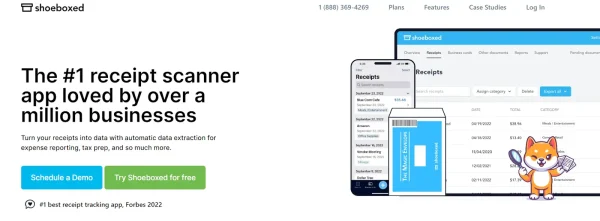
Shoeboxed manages finances and streamlines your expense tracking, which is critical to running a successful transportation business. Shoeboxed simplifies this process by digitizing and organizing your receipts and financial documents.
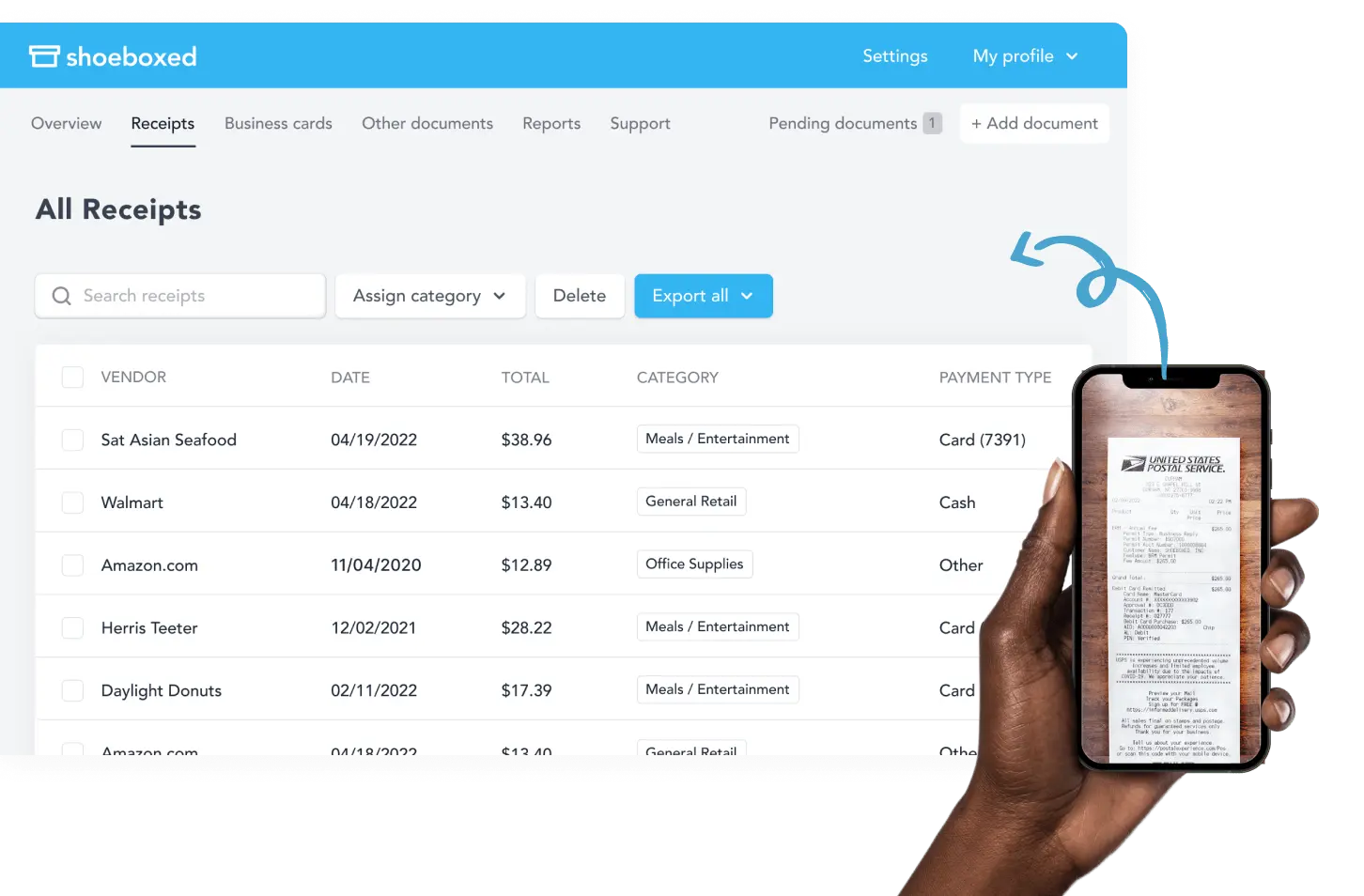
Use Shoeboxed to scan and digitize all your receipts, whether from fuel purchases, vehicle maintenance, tolls, or other business expenses. Just scan the receipt with Shoeboxed's app and your smartphone's camera.
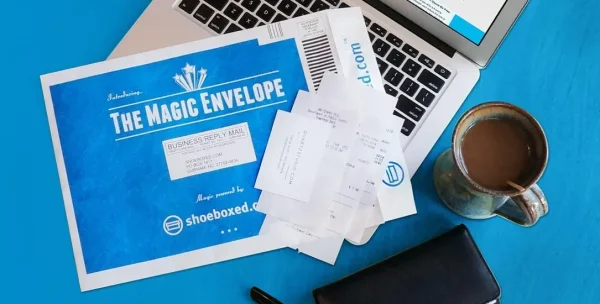
You can use Shoeboxed as a service and outsource your receipt scanning with their Magic Envelope.
As a driver, you will generate many receipts from parking, meals, gas, and tolls.
These expenses are tax deductible—and the last thing you want to lose is a tax receipt.
The Magic Envelope allows drivers to keep track of fuel costs and expenses while on the road. Drivers can keep the envelope on their car or truck dashboard and fill it with receipts as they pay for gas, meals, etc.
Then mail the envelope back to Shoeboxed, where they will scan, human-verify, and upload the receipts to your account.
Hit the road with Shoeboxed ⛟
Stuff receipts into the Magic Envelope while on the road. Then send them in once a month to get scanned. 💪🏼 Try free for 30 days!
Get Started TodayMileage tracker
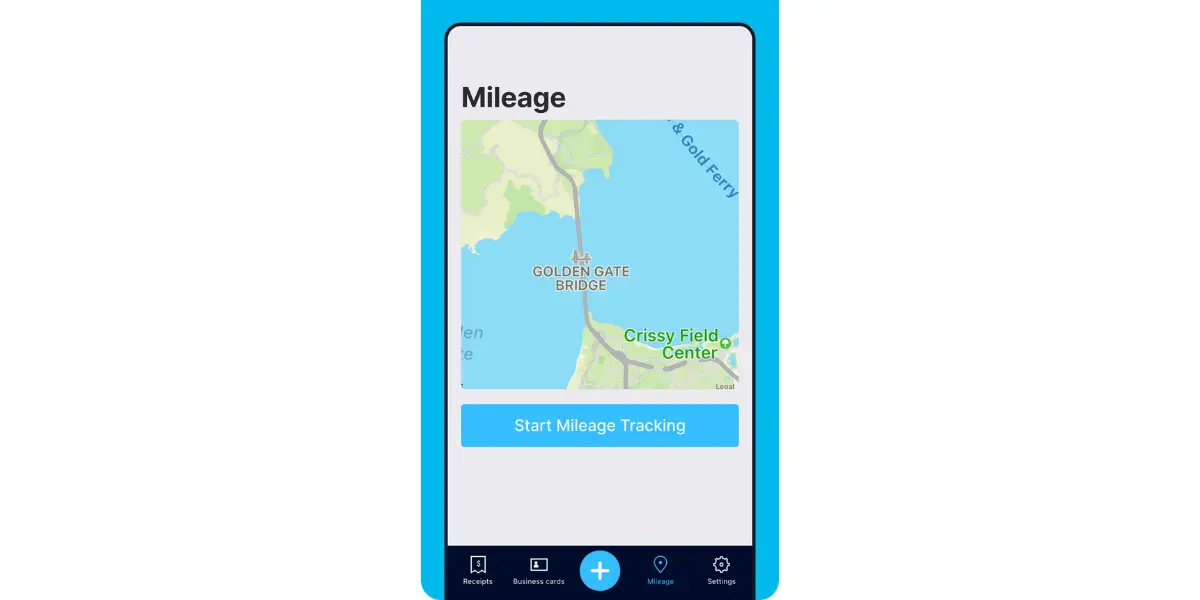
Shoeboxed also features an impressive mileage-tracking app that makes tracking your mileage easier.
After you sign up for Shoeboxed, you can start tracking miles in seconds:
Open the Shoeboxed app.
Tap the “Mileage” icon.
Click the “Start Mileage Tracking” button.
And drive!
Shoeboxed tracks your location and miles whenever you start driving and saves your route as you drive.
You can drop pins to make tracking more precise as you make stops at restaurants or to pick up passengers.
At the end of a drive, click the “End Mileage Tracking” button to create a trip summary. Each summary will include the date, editable mileage, trip name, and tax-deductible miles and rate information.
Click “Done” to generate a receipt for your drive and get a photo of your route on the map.
Shoeboxed's mileage tracker app will automatically categorize your trip under the mileage category in your account.
Track mileage with Shoeboxed 🚗
Track mileage using your phone’s built-in GPS for unmatched ease and accuracy. 💪🏼 Try free for 30 days!
Get Started TodayExpense categorization

Shoeboxed streamlines the expense management process. The platform automatically extracts critical data from receipts and categorizes expenses, making tracking and managing your finances more manageable.
Integration with accounting software

Shoeboxed integrates seamlessly with popular accounting software like QuickBooks and Xero, ensuring your financial records are always up-to-date and accurate.
IRS compliance
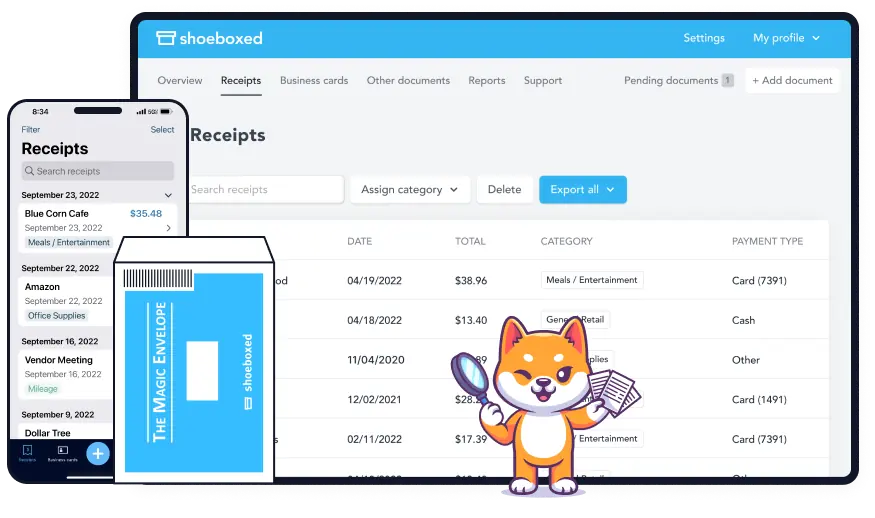
Shoeboxed stores digital copies of receipts in a format accepted by the IRS, simplifying tax preparation and audit processes for transportation companies.
By incorporating Shoeboxed into your own transportation business operations, you can save time, reduce errors, and gain better control over your expenses, contributing to your overall success and efficiency.
Lighten the Load✨
Learn How a Multi-Campus Church Reclaims 20 Hours a Month with the Shoeboxed App
Read the case studyWhat benefits are there in starting a transportation business?
Starting a transportation business can be a rewarding and profitable venture.
Here are several compelling reasons why you might consider starting a transportation business:
High demand for services
Consistent need: Transportation is a fundamental aspect of personal and business activities. The movement of goods and people is constantly needed.
Growing E-commerce: E-commerce has significantly increased the demand for reliable logistics and delivery services. Companies continually seek efficient transportation solutions to meet customer expectations for fast and reliable delivery.
Diverse opportunities
Various sectors: The transportation industry encompasses many services, including freight and logistics, passenger transport, and specialized transport (e.g., medical supplies and hazardous materials).
Flexibility in service: Depending on your chosen niche, you can operate locally, regionally, or internationally. This flexibility allows you to scale your business according to your resources and market demand.
Potential for profitability
Lucrative earnings: The transportation industry can be highly profitable, especially if you manage your operations efficiently. You can maximize your profits by optimizing routes, maintaining a well-kept fleet, and providing excellent customer service.
Scalability: As your business grows, you can expand your fleet, hire more drivers, and offer additional services, increasing your revenue.
Job creation
Employment opportunities: Starting a transportation business can create jobs for drivers, dispatchers, mechanics, and administrative staff. This contributes to the local economy and builds a strong, loyal team that supports your business growth.
Entrepreneurial freedom
Be your own boss: Owning a transportation business allows you to make your own decisions, set your own schedule, and build a company culture that reflects your values and vision.
Control over operations: You have the autonomy to develop operational strategies, implement new technologies, and innovate your services to stay competitive in the market.
Technological advancements
Innovative tools: The transportation industry rapidly evolves with technological advancements, such as GPS tracking, route optimization software, expense management, and automated dispatch systems. Leveraging these tools can enhance efficiency, reduce costs, and improve customer satisfaction.
Sustainability initiatives: There is a growing focus on sustainability in transportation, with opportunities to adopt eco-friendly practices, such as using electric vehicles and optimizing fuel consumption. This not only benefits the environment but can also attract environmentally conscious customers.
Resilience to economic fluctuations
Essential services: Transportation services are often essential regardless of economic conditions. While certain sectors may experience downturns, transportation needs remain stable, providing resilience against economic fluctuations.
Frequently asked questions
What are the essential licenses and permits required to start a transportation business?
Starting a transportation business requires obtaining several licenses and permits to operate legally and compliantly. The specific requirements can vary depending on the type of transportation service you provide and your location, but here are some common licenses and permits you will need:
Business license: Obtain a general business license from your local city or county government to operate your business legally.
Federal Employer Identification Number (EIN): If you plan to hire employees or form a corporation or partnership, you will need an EIN from the IRS.
International Registration Plan (IRP) and International Fuel Tax Agreement (IFTA): These agreements facilitate the collection and distribution of registration fees and fuel taxes for vehicles operating in multiple jurisdictions.
Commercial driver’s license (CDL): Ensure all drivers have the appropriate CDL for the type of vehicle they will be operating.
Vehicle registration: Register all commercial vehicles with your state's Department of Motor Vehicles (DMV).
Local permits: Depending on your location and the nature of your business, you may need additional local licenses or certifications, such as:
Parking permits: For parking commercial vehicles in certain areas.
Zoning permits: To ensure your business operations comply with local zoning laws.
Special permits: If you transport hazardous materials, oversized loads, or other special cargo, you may need additional licenses and certifications specific to those activities.
How can Shoeboxed benefit a transportation business?
Shoeboxed manages finances and streamlines your expense tracking, which is critical to running a successful transportation business. Shoeboxed simplifies this process by digitizing, organizing, categorizing, and turning your expenses into quick reimbursements, easily accessible expense reports, and money-saving tax deductions.
In conclusion
Learning how to start a transportation business involves careful planning, substantial investment, and diligent management. By following these steps, you can establish a strong foundation for your business. Leveraging tools like Shoeboxed for expense management will help you streamline your financial management so that you can focus on growing your business. Starting a transportation business can be a rewarding experience.
Caryl Ramsey has years of experience assisting in bookkeeping, taxes, and customer service. She uses various accounting software for setting up client information, reconciling accounts, coding expenses, running financial reports, and preparing tax returns. She is also experienced in setting up corporations with the State Corporation Commission and the IRS.
About Shoeboxed!
Shoeboxed is a receipt scanning service with receipt management software that supports multiple methods for receipt capture: send, scan, upload, forward, and more!
You can stuff your receipts into one of our Magic Envelopes (prepaid postage within the US). Use our receipt tracker + receipt scanner app (iPhone, iPad, and Android) to snap a picture while on the go—auto-import receipts from Gmail. Or forward a receipt to your designated Shoeboxed email address.
Turn your receipts into data and deductibles with our expense reports, including IRS-accepted receipt images.
Join over 1 million businesses scanning & organizing receipts, creating expense reports, and more—with Shoeboxed.
Try Shoeboxed today!



